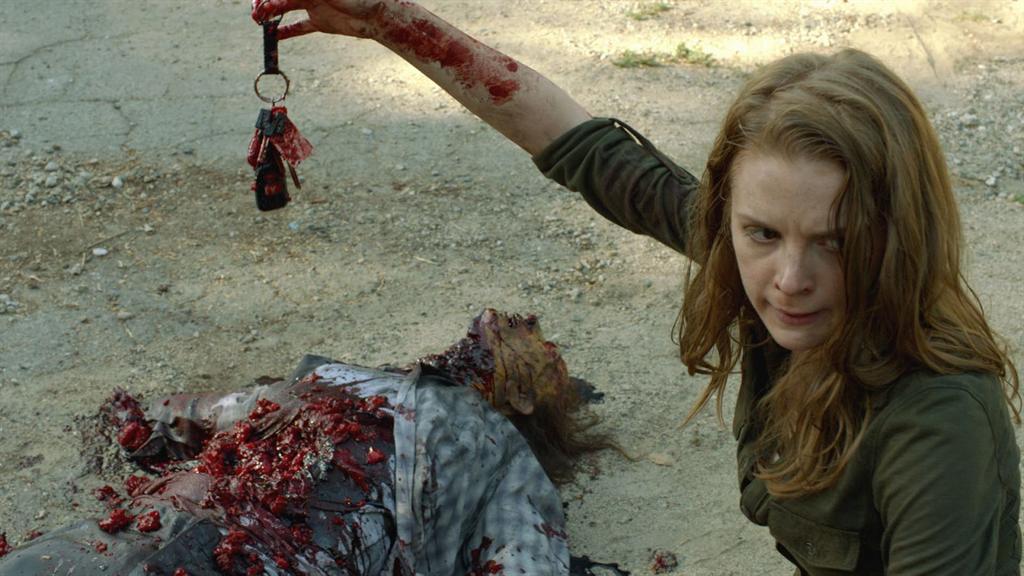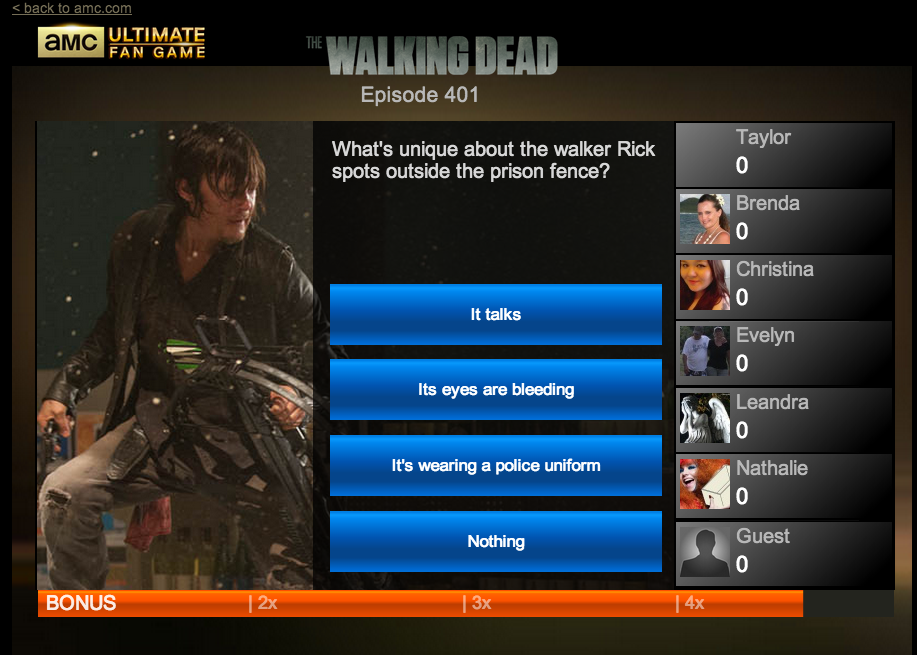Innovation Invasion: How 'The Walking Dead' Extends Across Audiences and Screens

FromThe Walking Dead webisodic series “The Oath”
LOS ANGELES—AMC ramped up for season four of “The Walking Dead” with the launch of “The Oath,” a three-part web series directed by “Walking Dead” executive producer and special effects makeup wizard Greg Nicotero. The webisodes consist of short stories (seven to 10 minutes) that follow minor characters from the broadcast show and are set in other parts of the “Walking Dead” universe.
The webisodic series has picked up both Streamy and Webby awards, in addition to the Writers Guild of America’s first-ever award for Outstanding Achievement in Writing Derivative New Media, in 2012.
The webisodes are typically released ahead of the broadcast season premiere, whetting fans’ appetites for more zombie gore. The strategy has paid off in a big way for AMC. The third season finale drew the show’s highest ratings to date, with an audience of 12.4 million. By comparison, the “Breaking Bad” series finale drew 10.3 million viewers.
But AMC doesn’t stop there. In an era of shrinking real-time audiences, the cable net also bolsters the number of broadcast viewers with what it calls “Story Sync,” mobile content developed to complement the series that’s deployed simultaneously with the broadcast.
“We’re serving up 16 to 30 pieces of content for one hour of television, timed to specific moments in the show,” said Mac McKean, AMC’s senior vice president of digital media, who has been with the company since 2006.

The content for Story Sync ranges from character profiles and kill stats to trivia questions and opinion polls. The content for AMC’s Story Sync, nominated for a Creative Arts Emmy earlier this year, ranges from character profiles and kill stats to trivia questions and opinion polls. It’s available via a free mobile app that users can access both during and after the show.
This second-screen content allows AMC to direct the focus of the show’s already robust fan base while also providing an entry point for new watchers. “We have different groups we’re servicing all at the same time,” McKean said. “First of all we are servicing the fans of the show—especially the most passionate fans, but also the casual fans. Then we’re also developing content for people who may have never seen the show, keeping in mind that this digital content may be their first taste of the show. So we’re staying true to the super-fans, but we’re doing it in a way that’s acceptable down the chain.”
Building a dedicated experience for viewers seeking a network-produced second-screen experience was a natural extension of AMC’s digital strategy, McKean said. “We encapsulate the production: the writers, all the executive producers of the show, the prop masters, the various cast and crew members,” he said. “So there’s a lot of access to information and content that we can serve up during the show to, hopefully, make a better and more engaging experience for those who are using their computer or phone anyway.”
ULTIMATE FAN GAME
Beyond its Story Sync app, AMC serves up content via social media that’s meant to be experienced outside of the broadcast, including an Ultimate Fan Game that tests users’ knowledge of the show with sharable results, and “The Walking Dead Social Game,” a story-based Facebook game that invites fans to step into the zombie-filled world, where they fight for their lives, help friends survive, and embark on adventures with characters and settings from the show.

With a “Walking Dead” spin-off series planned for 2015, to be executive produced by Robert Kirkman, Gale Anne Hurd and David Alpert, it’s a safe bet that AMC will be serving up even more sophisticated second-screen content in the future. McKean and his team have already started delivering video content created specifically for the Story Sync app: Brief vignettes meant to be viewed during the broadcast itself.
“We kept them very short because they were meant to be squeezed into the margins, so to speak,” McKean said. “I mean, you’re already watching the show. We realize that you may not want to spend time with extra video content right now. So we just serve it up and you can still access and engage with it after the show is over.”
To bring viewers deeper into the world of “The Walking Dead,” maintaining the integrity of the fourth wall is key. “It’s about creating an immersive world,” McKean said. “We’re staying within the fictional world, and I think there are a lot of rich possibilities to combine in that area. We’ve really only scratched the surface.”
The professional video industry's #1 source for news, trends and product and tech information. Sign up below.
